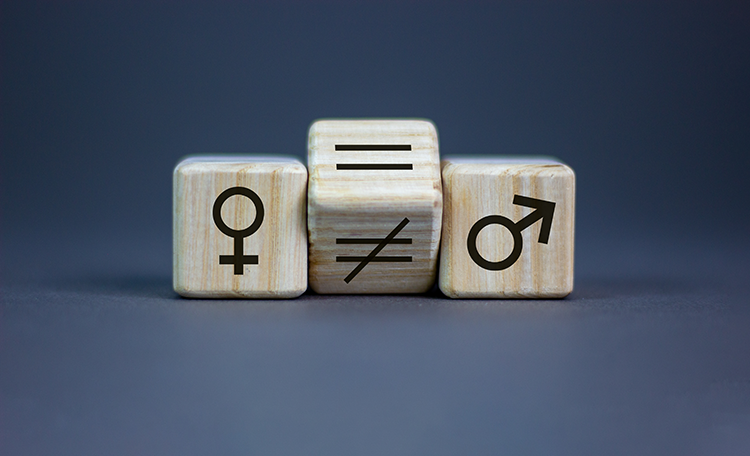Law school achievement gap by gender for faculty and deans examined in new paper

Image from Shutterstock.
Women are more than two times more likely than men to have perceived “lower status” positions at law schools and work as interim deans, according to a recent working paper by three legal academics.
As examples of lower status positions, the paper listed adjuncts, lecturers, instructors, clinical and legal writing professors, teaching fellows and librarians. The paper also found that women are two times as likely as men to work as interim deans. Titled Women in U.S. Law Schools, 1948-2021 and published Aug. 16, the piece is written by Elizabeth Katz, Kyle Rozema and Sarath Sanga. Katz and Rozema are professors at the Washington University in St. Louis School of Law, and Sanga is a professor at the Northwestern University Pritzker School of Law.
Their data, dating back to 1948, is from the American Bar Association, the Association of American Law Schools’ Directory of Law Teachers and Rosenblatt’s Deans Directory. Previous articles about women in law school are cited, as well.
The paper found that women’s share of faculty and dean spots closely track the number of female candidates and law students. By the end of the 20th century, women made up 48% of law students, 33% of faculty and 13% of deans, according to the paper. In 2021, 55% of law students were women, 45% were faculty and 42% were deans.
In the 1970s, less than 10% of law school faculty were women, but women and men were about equally as likely to occupy lower status positions, according to the report. That was also true in the 1980s, when the number of female faculty increased to 20%. By 2021, 45% of law school faculty were women, and over the past decade, women were twice as likely as men to have positions perceived as being lower status.
Additionally, the paper claims that the 1960s, rather than the 1970s, was a period of great change for women and legal education because almost every law school had at least one female student in the 1960s. And by the mid-1960s, women and men had graduation rates that were approximately equal.
“This is a novel finding because historical literature on women in the legal profession pinpoints the early 1970s as the crucial moment and attributes the shift to legal and political changes of the late 1960s,” Katz told the ABA Journal in an email.
Also, the 1960s brought the end of men-only student bodies, according to the paper. Additionally, it noted that at the start of the 1960s, 50% of law schools had no female faculty, but by the 1970s, almost every law school had at least one female faculty member.
Through the data, the authors found that some law schools developed cultures of recruiting and retaining women as students, faculty and deans. The report included a table ranking women’s representation in law school, from one to 50.
In the No. 1 spot for students is the University of California at Davis School of Law. For faculty, the University of Maryland Francis King Carey School of Law has the No. 1 spot, and in the top spot for deans is the University of California Los Angeles School of Law.



